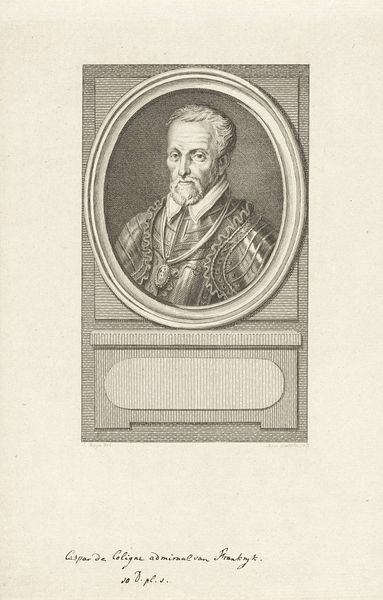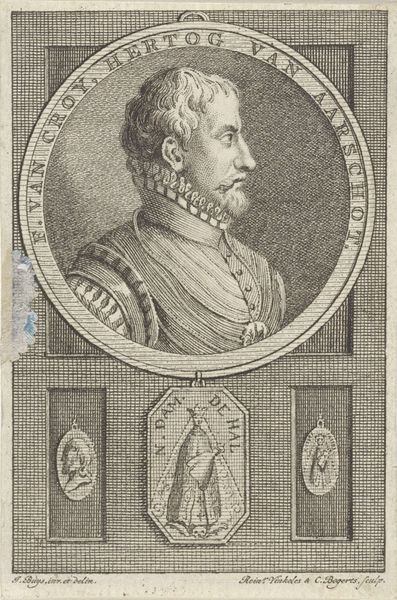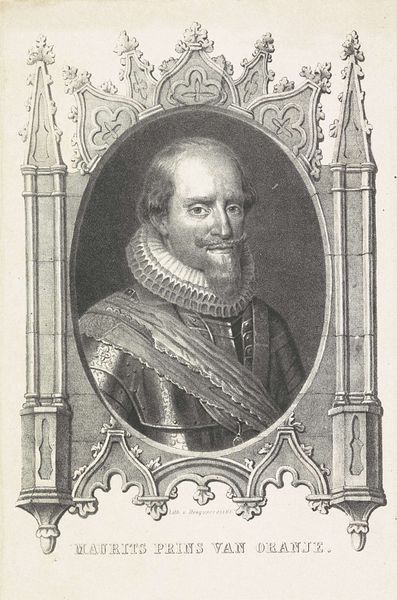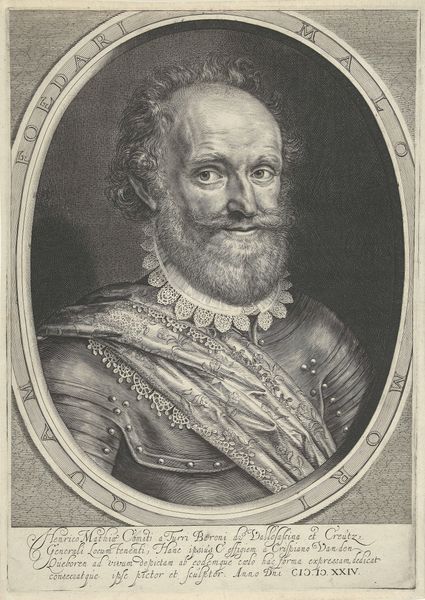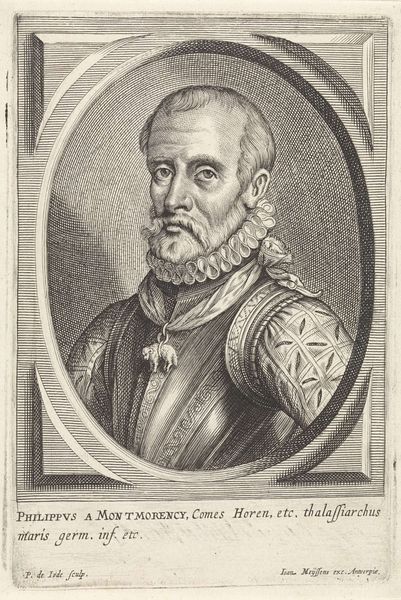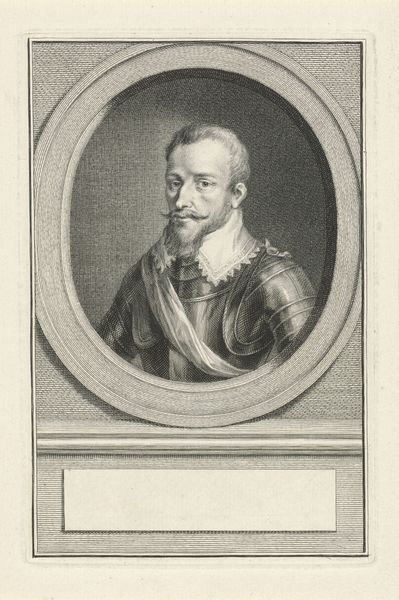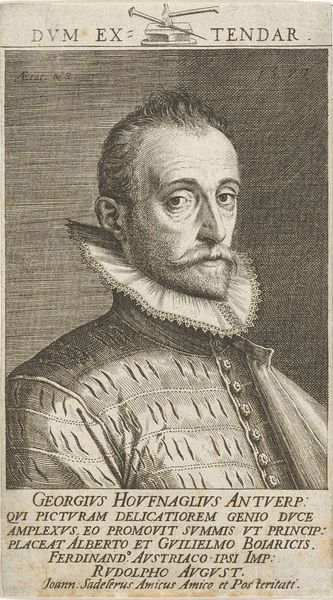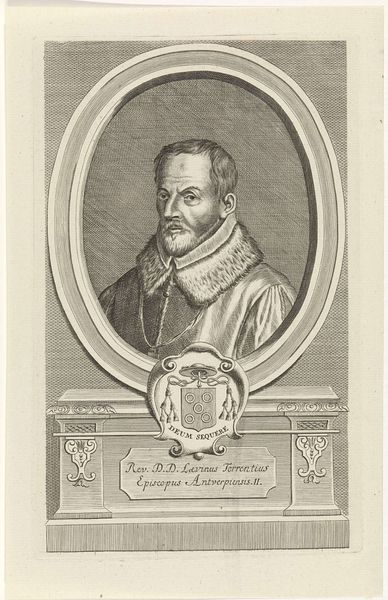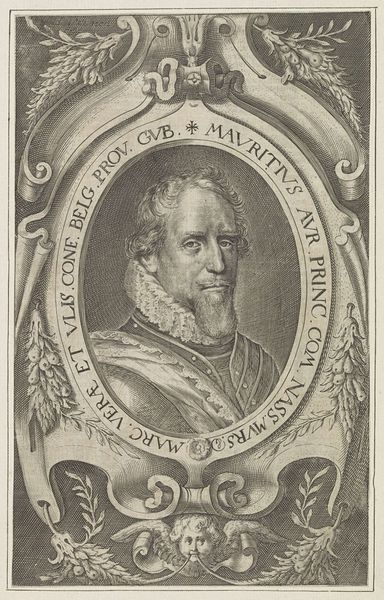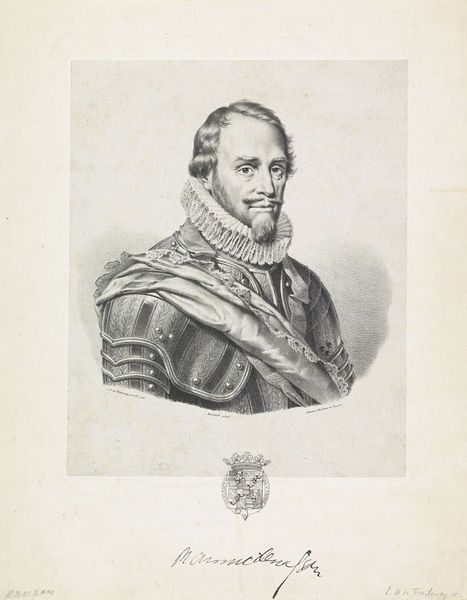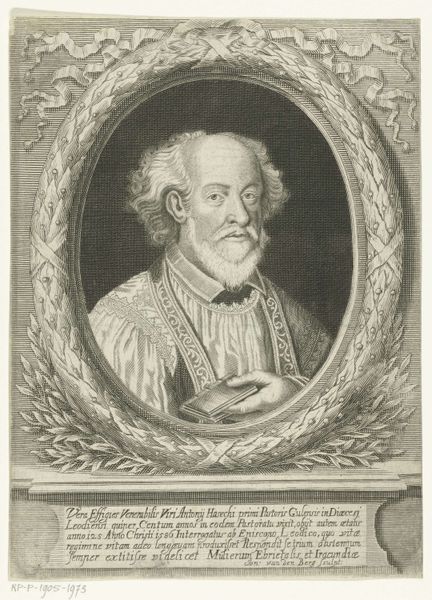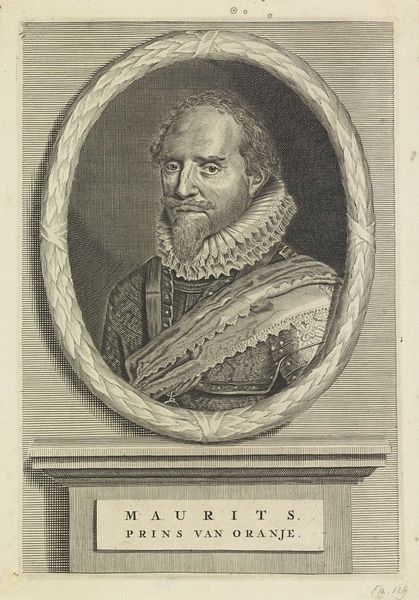
#
pencil drawn
#
aged paper
#
light pencil work
#
pencil sketch
#
old engraving style
#
caricature
#
personal sketchbook
#
old-timey
#
portrait drawing
#
pencil work
Dimensions: height 151 mm, width 91 mm
Copyright: Rijks Museum: Open Domain
Curator: Let's consider this intriguing portrait drawing, "Portret van Gaspard de Coligny II" by Jacobus Buys, created sometime between 1734 and 1801. The piece resides here at the Rijksmuseum. What's your initial response to it? Editor: The overwhelming impression is one of gravitas. The subject's piercing gaze, the ornate armor – it evokes a sense of stern authority and the weight of historical events. There's a certain coolness, perhaps even a hint of melancholy. Curator: That melancholy may very well speak to the historical reality of Gaspard de Coligny II's life. He was, of course, a significant Huguenot leader during the French Wars of Religion, a tumultuous period marked by intense religious and political conflict. Buys probably intended that response. Editor: Indeed, the visual language reinforces that conflict. The crisp lines of the drawing, the contrast between light and shadow, almost feel like the sharp edges of dogma itself. Note also the prominent medal: a powerful symbol here. Curator: The medal speaks directly to the power dynamics of the period, marking status and allegiance in a deeply divided society. The image as a whole performs a kind of memorialization, attempting to solidify Coligny’s image. It attempts to make a statement within a shifting cultural and political climate of that time. Editor: I am drawn to the artistic choice of the oval frame surrounding Coligny. It encloses and almost entombs him. The use of such frames became incredibly widespread, which says much about the symbolic life assigned to these memorializing figures and why. Curator: Very perceptive! Placing individuals, especially historical figures, within such a stylized frame reinforced ideas about their elevated position, while subtly controlling how the public consumed that status. The sketch itself may be a preliminary drawing made in preparation for printmaking and wider circulation of this heroic symbolism. Editor: So this wasn't simply a portrait, but a calculated exercise in historical image-making! Thinking about it this way casts light on the institution it occupies today: the museum space becomes just another point in its journey of repeated interpretation and, crucially, manipulation. Curator: Precisely. I hope this brief exploration has prompted reflection on not only the depicted historical figure but also the act of portraiture itself. Editor: And maybe to wonder about what stories portraits *don't* tell...
Comments
No comments
Be the first to comment and join the conversation on the ultimate creative platform.
